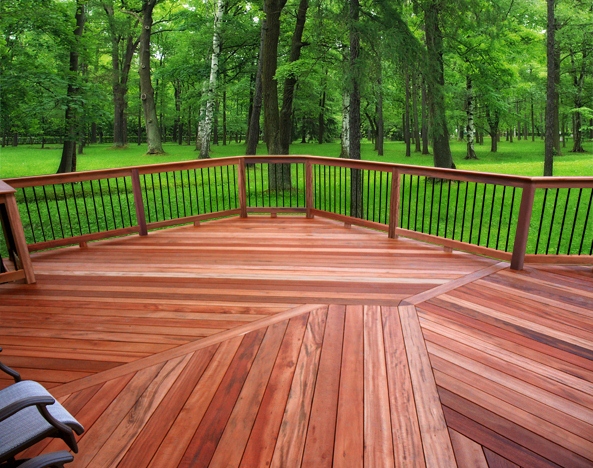Decking provides a huge amount of versatility to an outdoor space. It can be fitted fairly inexpensively to help renovate a garden and transform a messy space into something beautiful and useable.
However, whether you’re a customer or a tradesman, there are a few questions that spring to mind about how your decking should look and function. First and foremost is what material should be used.
Wood
When you think of classic decking, you think of either green-tinted wood (press-treated lumber) or, more commonly in the UK, timber such as cedar. Wood has the benefit of being and appearing natural, suiting a garden that wants to look more in tune with nature. Wood is generally a cheaper option for tradesmen, who can pass the saving on to customers for a lower quote – which in turn leads to wood being the most popular material used in the UK.
Wood itself has maintenance costs, as the customer will either have to repair and reseal the decking if it warps or hire an expert to do so. You’ll need to re-stain decking to keep it looking good, as discolouration will naturally occur over time. However, the rate of this discolouration depends on the location of your deck. If it’s more sunlit than other areas of your garden, it’ll discolour faster.
Composite Decking
Manmade, or ‘composite’ decking is a fast growing area for lots of reasons. The decking is made from a composite of plastic material. What actually goes in to the material depends on the brand. Trex, for example, uses 95% recycled material, such as reclaimed wood and sawdust as well as plastic.
Unlike wood, composite decking is as low maintenance as decking can be. It offers no staining, rotting, fading or splitting thanks to the artificial construction. Better still, it also mimics wood grain and is available in a variety of different designs. However, some brands of composite decking can’t be repainted to achieve a custom colour – so if you’re installing a deck for someone who is prone to changing their minds they may want to go for wood.
Composite isn’t totally bulletproof either – as mould and mildew will still grow in the darker, wetter areas of the deck. Because there’s trace elements of wood in most versions, you can eventually see signs of decay in some composites.
Which should I pick?
Around 80% of decks are wooden – but the interest in plastic decking is on the rise. In the UK, thanks to rainfall and poor weather, composite decking can be a great choice to withstand our unstable seasons whilst retaining all the good looks. More and more of us than ever are now searching for composite decking, as evidenced by this Google Trends graph.

Ultimately, deciding between wood and composite decking is a tough choice. If you can budget for it, composite offers less maintenance cost and durability. Wooden decking offers all the benefits of a natural material and is cheaper – but can warp and split. It depends heavily on budget and realistically, both are good choices when properly fitted.




